Automobiles
Mojave Proving Ground: Backbone of Hyundai, Kia’s success in US
The high desert test center is playing a major role in enhancing Hyundai’s status in the US, says a company executive
By Jan 15, 2024 (Gmt+09:00)
3
Min read
Most Read
LG Chem to sell water filter business to Glenwood PE for $692 million


Kyobo Life poised to buy Japan’s SBI Group-owned savings bank


KT&G eyes overseas M&A after rejecting activist fund's offer


StockX in merger talks with Naver’s online reseller Kream


Mirae Asset to be named Korea Post’s core real estate fund operator


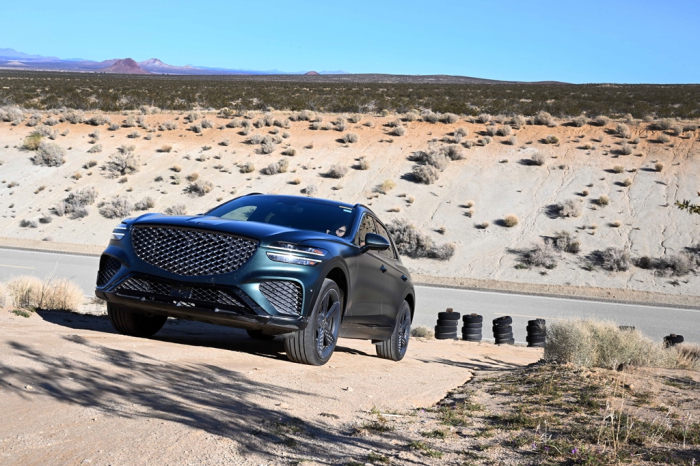
CALIFORNIA CITY, Calif. – The Mojave Desert, known by locals as the "high desert," lies some 170 km northeast of Los Angeles, California. In the midst of this remote desert, along a desolate road, a signboard marked HYUNDAI appears out of nowhere.
Behind the sign, a vast area of over 1,700 hectares — more than twice the size of Seoul’s Yeouido Island – unfolds: The California Proving Ground for South Korea’s top automaker Hyundai Motor Group.
The automotive group, which owns Korea’s two largest car-making units, Hyundai Motor Co. and Kia Corp., built the vehicle test center, also known as the Mojave Proving Ground, in 2005 with an investment of 80 billion won ($60.5 million).
Situated between 600 meters and 1,200 meters (2,000-4,000 feet) above sea level, the Mojave Desert sits in the rain shadow of the southern Sierra Nevada mountains and coastal ranges of Southern California.
Named for the indigenous Mojave people, the desert is among the driest, and the site of Death Valley — the lowest point in the United States.
Originating from the Spanish, Mojave is also spelled Mohave, and represents a brand Kia proudly offers as its largest SUV.
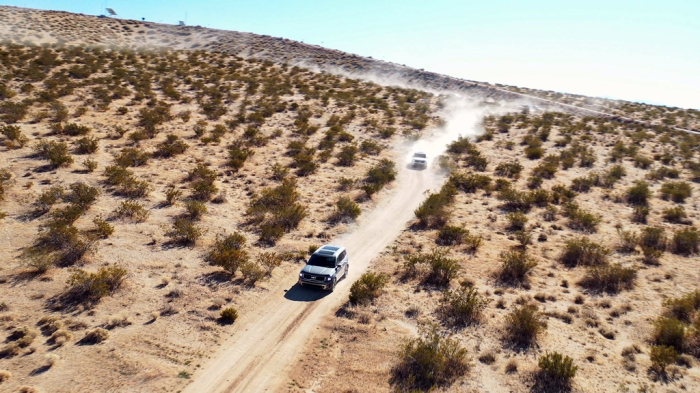
Hyundai and Kia chose the location for their driving test center because that is where extreme tests are possible.
The annual average temperature at the location is 39 degrees Celsius. In summer, the surface temperature rises to 54 degrees Celsius. In winter, it drops to zero. The winds are strong enough to boast the United States' largest wind power generation site.
Merely placing vehicles in such harsh conditions is probably all that is needed to show how durable and well-built a car is.
"In many states, including California, Texas and Arizona, surface temperatures are high, causing pavement damage. Thus, they [road builders] deliberately create gaps in the roads to account for asphalt expansion," said Lee Kyung-jae, chief researcher at Hyundai and Kia America.
"To ensure ride comfort and durability on such roads, our tests are conducted in similarly rigorous environments."
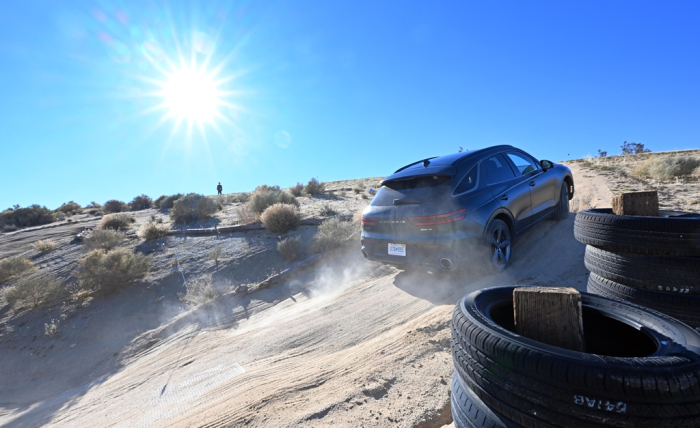
RIGOROUS OFF-ROAD TESTS
Amid the desert's extreme and often-scorching temperatures, the Mojave test center conducts off-road tests on ride comfort, braking performance, noise, vibration and more.
Hyundai and Kia ensure that their vehicles meet rigorous US safety standards by launching vehicles only after they successfully undergo harsh tests at the proving ground, officials said.
The test center includes circuits, off-road tracks, slopes and even roads that simulate US road conditions.
Hyundai and Kia said they're now shifting their test focus to electric vehicles and SUVs, by implementing a more rigorous set of driving tests for their lineup of eco-friendly vehicles.
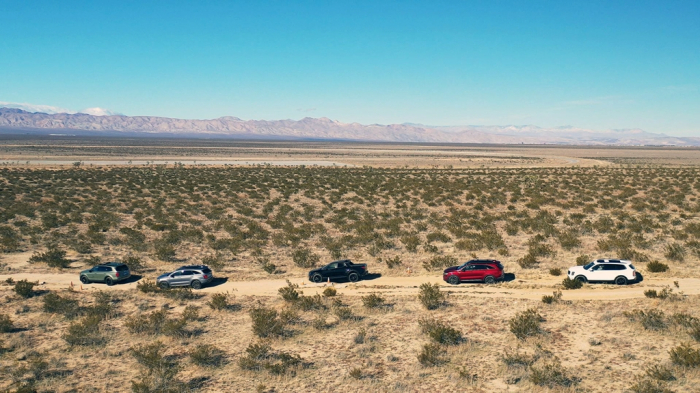
In general, EVs equipped with high-energy-density batteries weigh about 300 kg more than vehicles with an internal combustion engine.
The critical aspect of testing Hyundai and Kia’s EVs is assessing the vehicles' ability to withstand the additional weight pressure on their suspension, tires and car body, said a Hyundai Motor Group official.
The proving ground is also equipped with a 10.3-km-long oval track on which the carmakers test their vehicles at speeds of up to 200 km per hour.
STEEP SALES GROWTH
Hyundai and Kia’s efforts are generating tangible results, as shown by their steep sales growth in the US.
Hyundai Motor Group saw its vehicle sales in the US rise to an all-time high in 2023, driven by its latest models of recreational vehicles and electric cars.
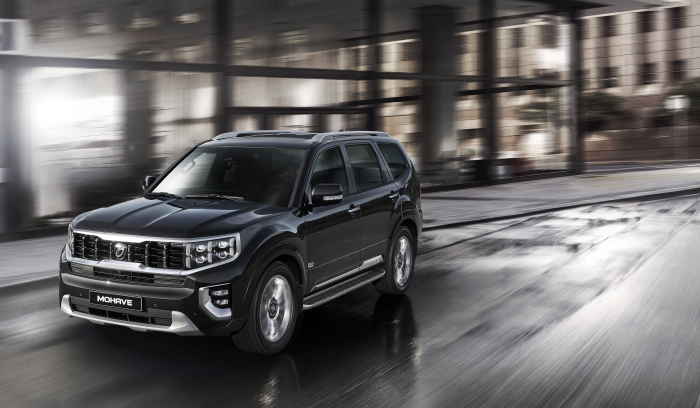
The conglomerate said Hyundai, Kia and its premium brand Genesis sold a combined 1.65 million vehicles in the US market last year, up 12.1% from the year prior.
With their sales performance, the automotive duo ranked fourth, following GM, Toyota and Ford.
The Kia EV9 SUV won the North American Car, Truck and Utility Vehicle of the Year (NACTOY) 2024 — Kia’s second such feat following NACTOY 2023 for its EV6.
“It is no exaggeration to say that the Mojave Proving Ground has played a big role in enhancing Hyundai’s status in the SUV and EV segments in the US,” said a Hyundai Motor Group official.
Write to Jae-Fu Kim at hu@hankyung.com
In-Soo Nam edited this article.
More to Read
-
 AutomobilesHyundai Motor to invest $845 million to expand India’s Talegaon plant
AutomobilesHyundai Motor to invest $845 million to expand India’s Talegaon plantJan 15, 2024 (Gmt+09:00)
3 Min read -
 Hydrogen economyHyundai, Kia join hands with Gore to develop hydrogen fuel cell material
Hydrogen economyHyundai, Kia join hands with Gore to develop hydrogen fuel cell materialJan 05, 2024 (Gmt+09:00)
2 Min read -
 AutomobilesHyundai Motor, Kia post record US sales in 2023, to rank 4th in US
AutomobilesHyundai Motor, Kia post record US sales in 2023, to rank 4th in USJan 04, 2024 (Gmt+09:00)
3 Min read -
 AutomobilesHyundai, Kia’s tech sets them apart with record hybrid vehicle sales
AutomobilesHyundai, Kia’s tech sets them apart with record hybrid vehicle salesDec 28, 2023 (Gmt+09:00)
3 Min read -
 AutomobilesHyundai’s new Tucson: Trendsetter with a taste for futuristic design
AutomobilesHyundai’s new Tucson: Trendsetter with a taste for futuristic designNov 21, 2023 (Gmt+09:00)
2 Min read
Comment 0
LOG IN


